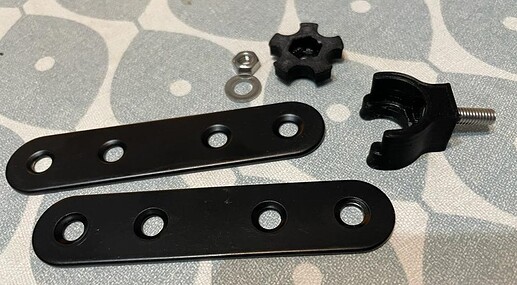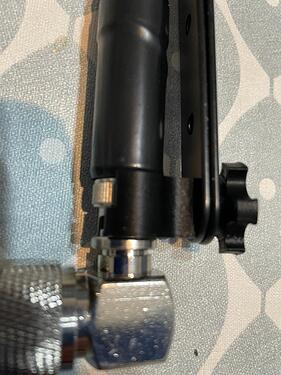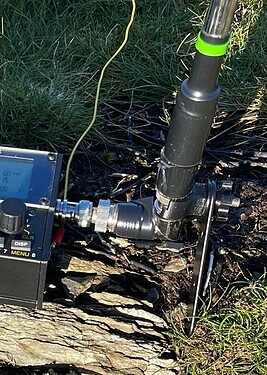Here are the components for my antenna whip bi-pod support. The assembled bi-pod is not pretty but it does the job.
The critical component is the bolt-able plastic clip that clips to the male BNC at the base of the whip. Adam @K6ARK has designed an improved (3D printable) version of the clip and a plastic knob which he uses for his AX1, and has posted details here …
… including a link where you can find the 3D-print design of the clip and a plastic knob for the nut & bolt fixing.
There appear to be two versions of the clip. My friend 3D-printed a few of both designs. One clip design has straight vertical edges and the other design is bigger at the bottom (see my photos) and I found the latter holds the BNC better.
The knob has a hexagonal-shaped recess for the nut. I think it’s intended for an American standard, probably a UNF nut thread, but I found the nearest metric thread nut fits too (with a bit of slack).
The legs are cheap stainless-steel plates which I got from Amazon [other vendor solutions are available]
https://www.amazon.co.uk/dp/B083LJNDGY?psc=1&ref=ppx_yo2ov_dt_b_product_details
I made two bi-pod supports, one for each whip, so that I don’t have to keep clipping and unclipping, potentially stressing the clip.


